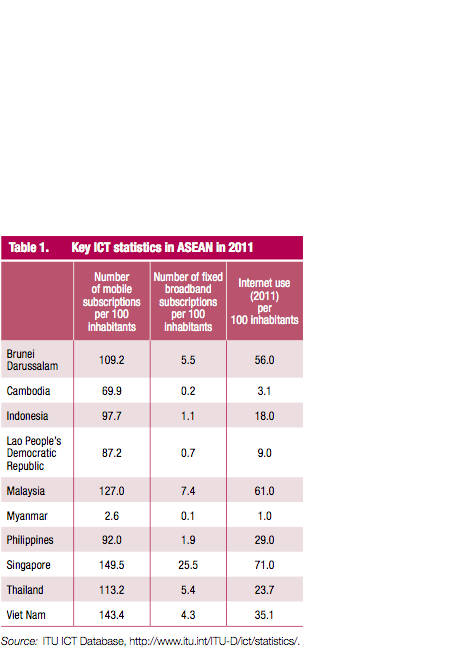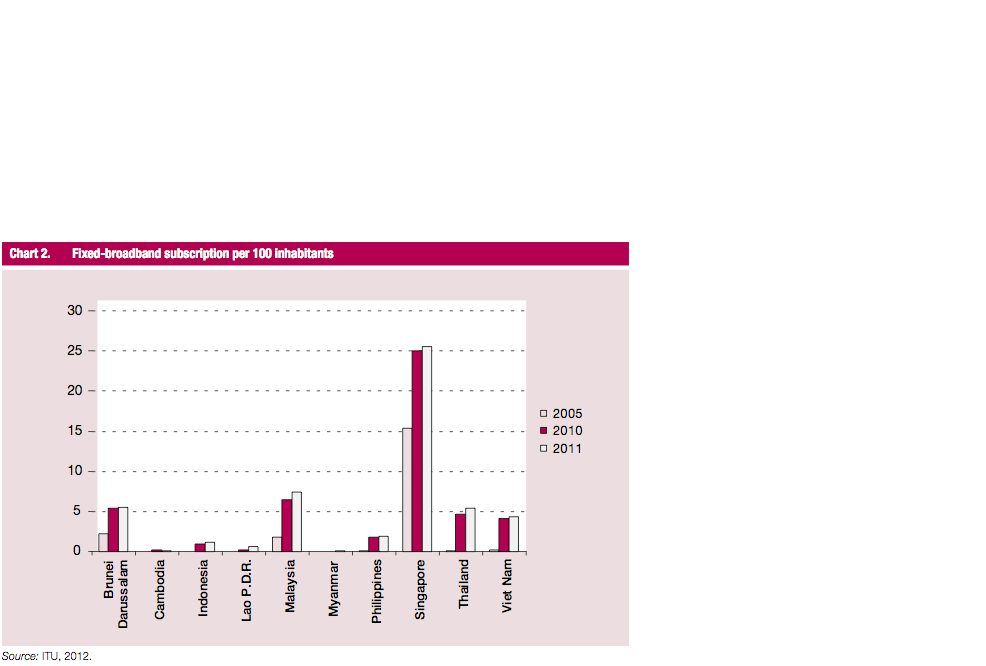Review of e-commerce legislation harmonization in the Association of Southeast Asian Nations (ASEAN) [UNCTAD/DTL/STICT/2013/1]
Why is cyberlaw reform important for the region?
ASEAN has around 9 per cent of the world’s population (about 600 million), with countries at various levels of economic development. The disparities in ICT uptake remain substantial, with great varying levels of Internet use and low levels of fixed broadband deployment (table 1 and charts 1 and 2). Mobile penetration is very high, except in Myanmar, and offers considerable potential for m-commerce as well as mobile financial services (e.g., m-payment, m-banking) already well used in some countries, such as Indonesia, the Philippines and Singapore.
According to a regional study commissioned in 2008 by the ASEAN Working Group on E-commerce and ICT Trade Facilitation on e-commerce activity, released in November 2010,[1]0 the region is a formidable economic force because of its size, and the potential for greater e-commerce and m-commerce use is enormous. The most visited websites in ASEAN are mainly United States-based – very few local sites appear in the top 10 most visited sites in each country in ASEAN. Moreover, the study notes significant barriers to the take-up of e-commerce: lack of consumer trust, the inability to judge the quality of the product during online shopping, payment fraud, privacy, identity theft, and limited access to cross-border complaints systems.



[10] ASEAN e-Commerce Database, 2009, http://www.asean.org/resources/item/asean-e-commerce-database-project-2.

![[2018 Global Cloud Computing Readiness Scorecard]](/public/ssi/pubs/pub_1.png)
 print this page
print this page sitemap
sitemap rss news feed
rss news feed manage email subscriptions
manage email subscriptions